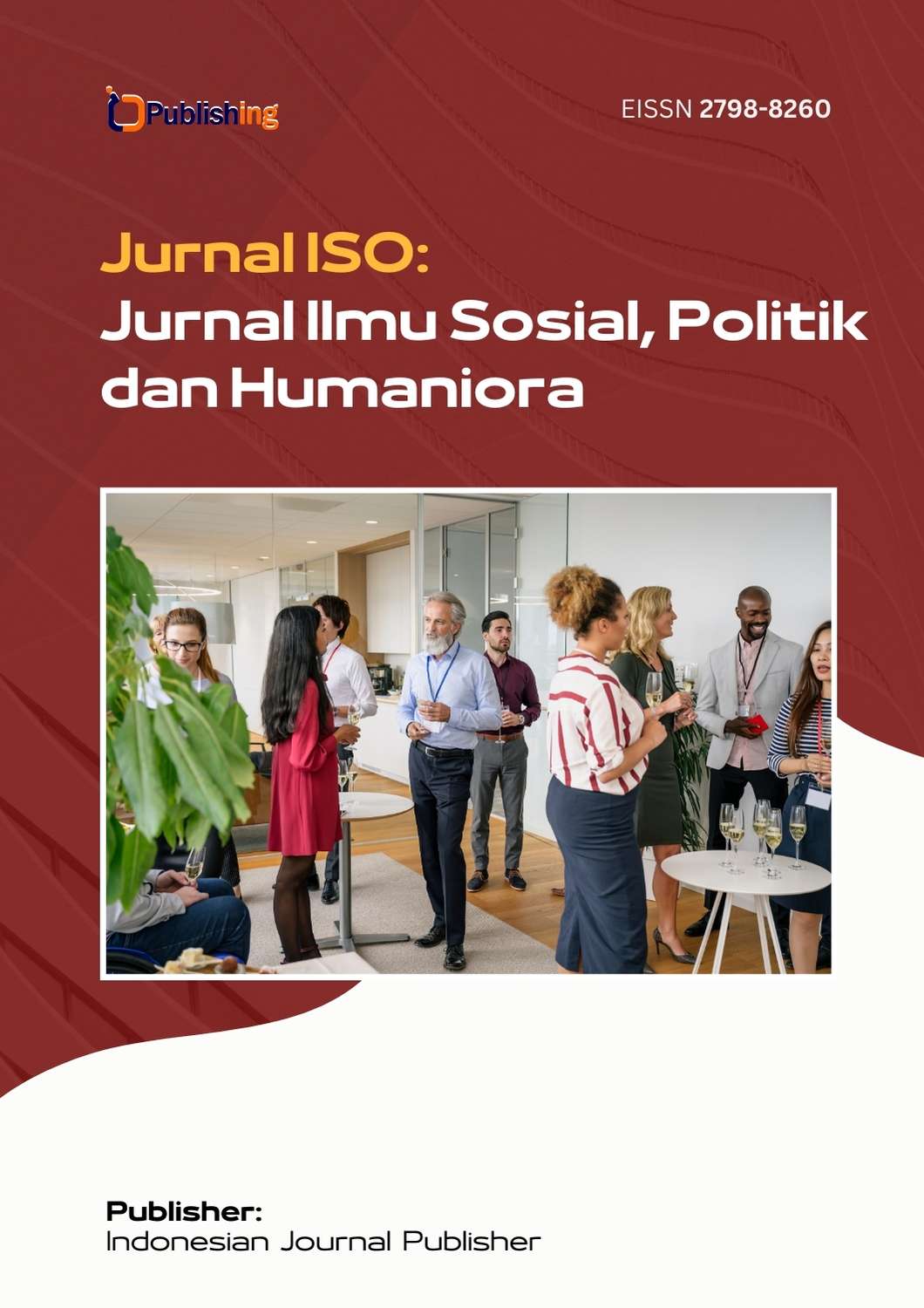Penggunaan Rokok Elektrik (Vape) Di Kalangan Perempuan Kota Pekanbaru
DOI:
https://doi.org/10.53697/iso.v5i1.2262Keywords:
Vape, Wanita, Apvi, RisikoAbstract
The purpose of this study was to determine the reasons and extent of women's understanding of the risks of e-cigarettes among women in Pekanbaru City. This type of research is descriptive qualitative. Researchers analyzed data using a case study method in which researchers conducted observations, interviews and documentation. To obtain informants, researchers used the Accidental Sampling technique, which is a method of accidental sampling by taking cases or informants who happened to be there or available at the time of the study. The types and sources of data used are primary and secondary data. In this study, researchers wanted to find out the reasons why women in Pekanbaru City use e-cigarettes and whether they know the risks they will get, such as health risks, cultural risks and economic risks. Then researchers used Max Weber's theory of social action, which has 4 types of actions including instrumental actions where someone assesses the best way to achieve a goal, value actions where someone cannot assess the right or wrong method chosen, affective actions are actions taken because of emotional impulses and traditional actions which are carried out based on hereditary habits. The use of electronic cigarettes among women in Pekanbaru City was analyzed using a social action perspective. Of the 5 main informants that the researcher had interviewed, the results were that 3 informants were included in traditional actions and 2 people were included in value actions.
References
Arifin, N. (2018). Konstruksi Makna Bagi Wanita Pengguna Vape di Kota Pekanbaru. Media Neliti, 5(1), 53–54.
Ardiyan Sabir, Muhammad Asikin, & Ilham Willem. (2019). Pengaruh Uap Rokok Elektrik Terhadap Kualitas Udara Ambien Pada Lingkungan Pengguna Rokok Elektrik Di Kota Parepare. Jurnal Ilmiah Manusia Dan Kesehatan, 2(3), 447–458.
Arieselia, Z., Hananta, L., Amelia, M., Mariska, F., Dolorosa Halilintar, V., Santosa, M., Wijaya, M., Dewi, R., Setiawan, J., & Heryani, M. (2023). Prevalensi Pengguna Rokok Elektrik Pada Mahasiswa Dan Faktor Determinan Yang Memengaruhi Perilaku Penggunaannya Prevalence of E-Cigarette Users Students and Determinant Factors Affecting Their Use Behavior. Damianus Journal of Medicine, 22(2), 136.
Amaliya, A. (2024). Characteristics, Perceived Side Effects, and Benefits of Vape Use in Indonesia: a cross-sectional survey of 1408 vapers in 29 provinces. Journal of International Dental and Medical Research, 17(2), 662–673. https://www.scopus.com/inward/record.uri?partnerID=HzOxMe3b&scp=85200227461&origin=inward
Arifin, N. (2018). Konstruksi Makna Bagi Wanita Pengguna Vape Di Kota Pekanbaru. JOM Unri, 5(1), 5–24.
Boetes, J. (2024). Allergic Contact Dermatitis Induced by Acrylate Exposure From a Vape Pen. Dermatitis, 35(2), 179–180. https://doi.org/10.1089/derm.2023.0205
Dwi Bramantyo, B., & Wulandari, C. (2020). Pemahaman Makna Hijab Vapers Dalam Menggunakan Vape. WACANA: Jurnal Ilmiah Ilmu Komunikasi, 19(2), 263.
El Hasna, F. N. A., Cahyo, K., & Widagdo, L. (2017). Faktor-faktor yang Berhubungan dengan Penggunaan Rokok Elektrik pada Perokok Pemula di SMA Kota Bekasi. Jurnal Kesehatan Masyarakat, 5(5), 2356–3346.
Eleonora Lintang Hapsoro Putri. (2017). Hubungan Terpaan Iklan Rokok di Televisi dan Intensitas Komunikasi Peer Group dengan Minat Merokok Remaja Perempuan Skripsi. 11(1), 92–105.
Hidir, Achmad dan Rahman Malik. (2024). Teori Sosiologi Modern. Tri Edukasi Ilmiah, Buktiinggi Sumatera Barat
Hutapea, D. S. M., & Fasya, T. K. (2021). Rokok Elektrik (Vape) sebagai Gaya Hidup Perokok Masa Kini di Kota Lhokseumawe. Jurnal Ilmu Sosial dan Ilmu Politik Malikussaleh (JSPM), 2(1), 92.
Hopstock, K. S. (2024). Chemical Analysis of Exhaled Vape Emissions: Unraveling the Complexities of Humectant Fragmentation in a Human Trial Study. Chemical Research in Toxicology, 37(6), 1000–1010. https://doi.org/10.1021/acs.chemrestox.4c00088
Kale, D. (2024a). Comparing identity, attitudes, and indicators of effectiveness in people who smoke, vape or use heated tobacco products: A cross-sectional study. Addictive Behaviors, 151. https://doi.org/10.1016/j.addbeh.2023.107933
Kale, D. (2024b). Comparing identity, attitudes, and indicators of effectiveness in people who smoke, vape or use heated tobacco products: A cross-sectional study. Addictive Behaviors, 151. https://doi.org/10.1016/j.addbeh.2023.107933
Marsigit, D. B. (2018). Vape Sebagai Gaya Hidup Komsumtif Baru Di Masyarakat. Phinisi Integration Review, 1(2), 201.
Nazwa Aulia A, Asti Lailatus S, Rayhan Akbar, Daffa R Nugraha, & Cita Nafisah P. (2023). Survei Hubungan Asosiasi antara Pria dan Wanita dengan Mengonsumsi Rokok atau Vape. Journal of Creative Student Research, 1(5), 333–344.
Oktavia, S., Banowati, L., Anindita, M. W., Musa, D. T., & Alamri, A. R. (2023). Motif Penggunaan Rokok Elektrik (vape) Studi Kasus Mahasiswi Antropologi Sosial FISIP UNTAN. Sosietas, 13(1), 13–24.
Ogburn, T. (2024). When Vaping Isn’t Actually Safer: A Death from Toxic Alcohol Contaminated Vape Juice. American Journal of Forensic Medicine and Pathology, 45(4), 335–339. https://doi.org/10.1097/PAF.0000000000000951
Pbert, L. (2024). Vaping cessation support recommendations from adolescents who vape: a qualitative study. BMC Public Health, 24(1). https://doi.org/10.1186/s12889-024-19036-1
Pradhyumnan, H. (2024). Electronic Cigarette Vape Exposure Exacerbates Post-Ischemic Outcomes in Female but Not in Male Rats. Stroke, 55(3), 735–746. https://doi.org/10.1161/STROKEAHA.123.046101
Soule, E. K. (2020). “I cannot live without my vape”: Electronic cigarette user-identified indicators of vaping dependence. Drug and Alcohol Dependence, 209. https://doi.org/10.1016/j.drugalcdep.2020.107886
Whaley, R. C. (2024). Importance of Various E-Cigarette Device and E-Liquid Characteristics by Smoking Status among Young Adults Who Vape. Substance Use and Misuse, 59(10), 1503–1510. https://doi.org/10.1080/10826084.2024.2360097














